100 Stories
SUNSET CRUISE – An Inexpensive Way To End The Day With Beauty
Part of the beauty that is Hiroshima is its location on the Seto Inland Sea. The focus of that beauty and attention usually goes all to Miyajima, at least for those who don’t live here. However there are multiple islands within the shortest of reaches from the mainland, and Hiroshima’s main port, Ujina, is quite busy all day long with the departure and arrival of ferry after ferry. The vast majority of that is commuter traffic, from businessmen to school students.
There is a bit of a dearth of cruises available, of the round-trip pleasure only variety, though some exist. Most of them again center on Miyajima and its glorious red Torii gate. Some of those are described elsewhere. There are a few Inland Sea cruises, however, if you search for them. They are sometimes a bit pricey, though, as they usually try to combine a lunch or dinner, or they are private charter to Miyajima and elsewhere.
However, here is a little secret that even the majority of residents of Hiroshima do not know. There is an extremely inexpensive way to get a little cruise time in on a ship. And if your timing is good, you can even get a glorious sunset cruise out of it. I know of at least three of these secret cruises that depart from Ujina Port, so I’ll describe one in detail below and give the names of two others at the end.
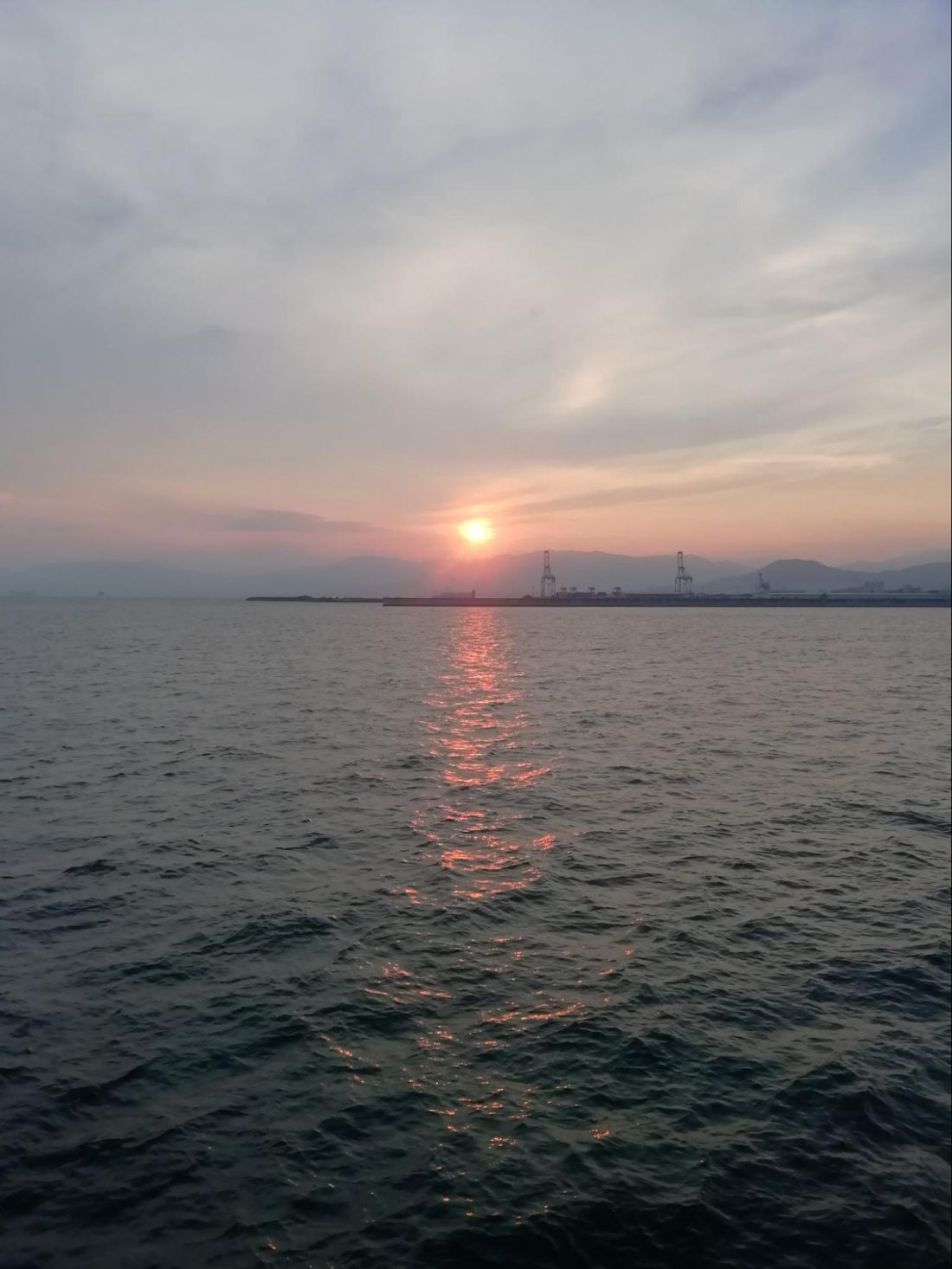
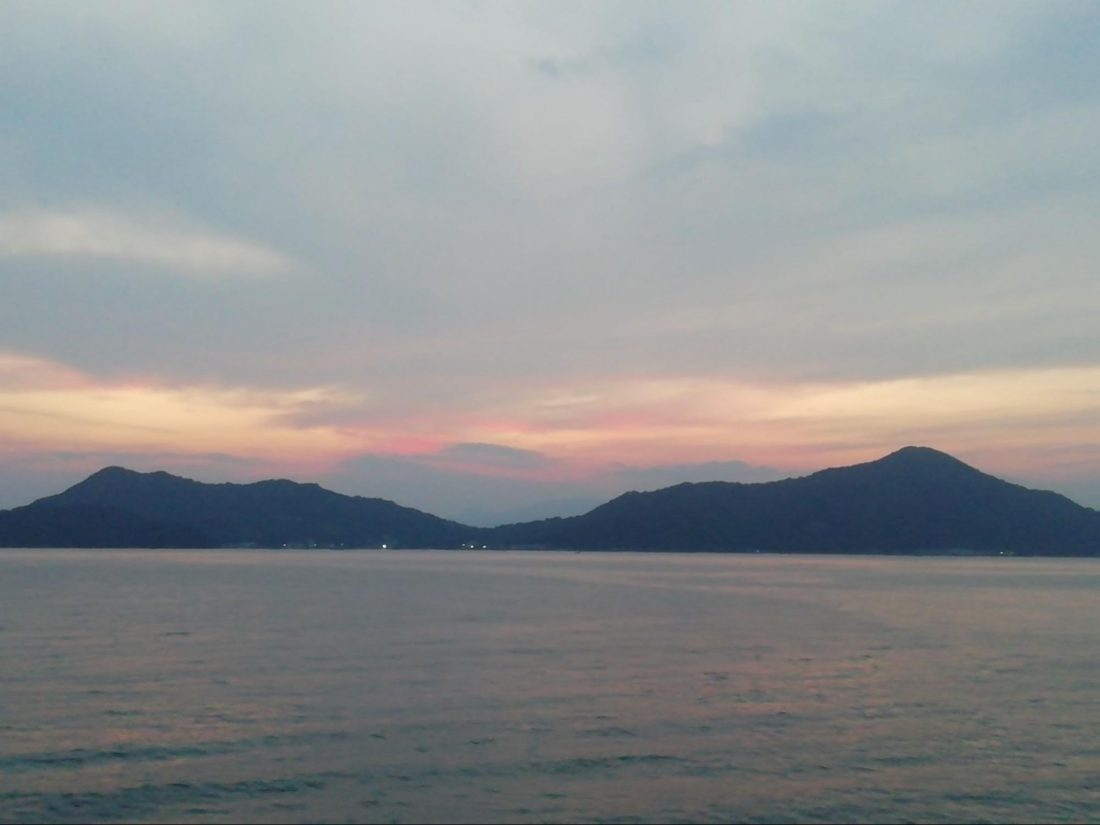
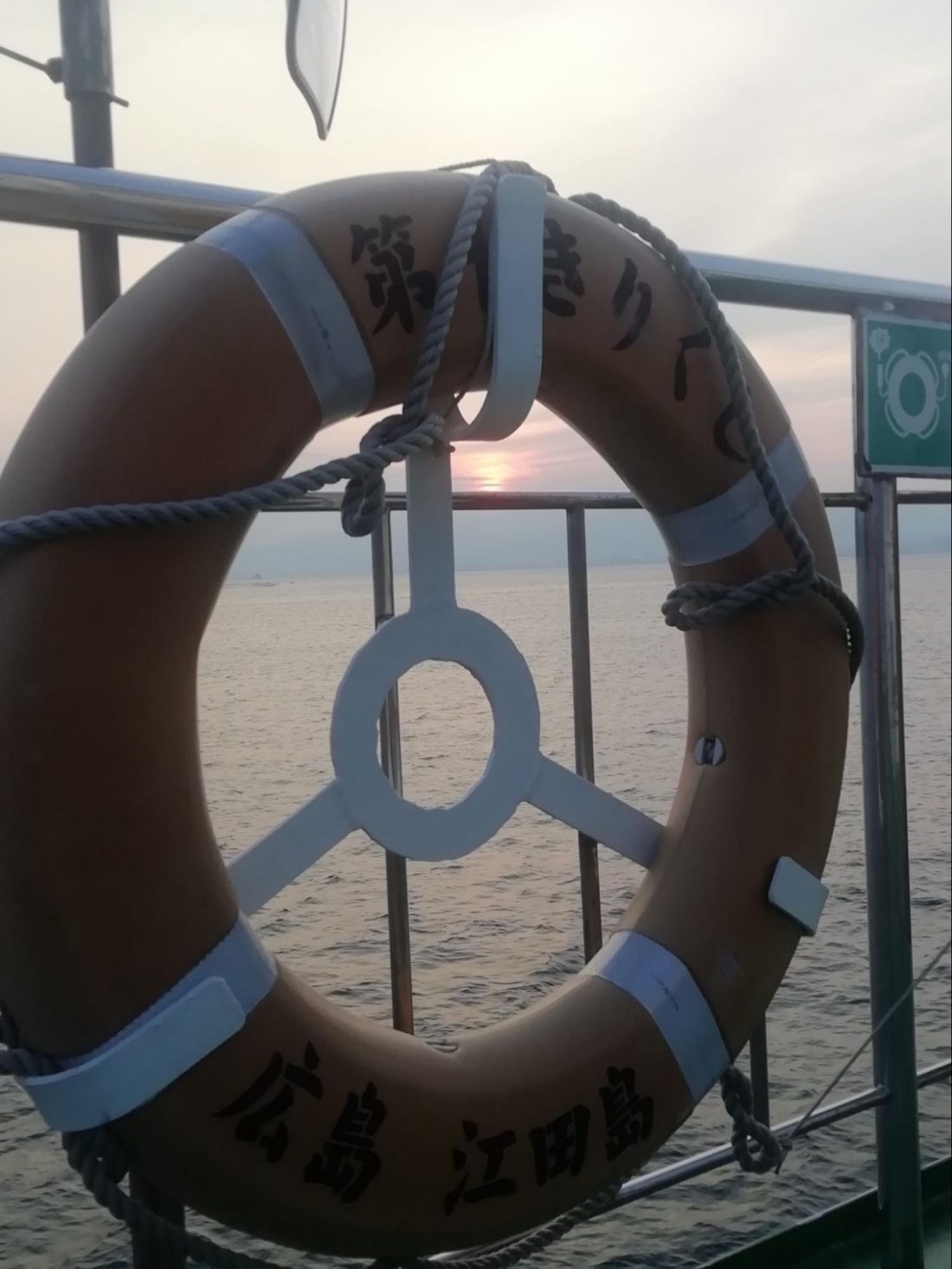
THE SECRET
The daily cruises to several of the islands of the Inland Sea near Hiroshima, primarily the two largest, Etajima and Ninoshima, are often filled in their morning and lunchtime runs with hobbyists and explorers. There is good biking on Ninoshima, and Etajima is rather large and has several fun places to explore. Also, the fishing is really good on both. So, many mainlanders will go to spend time on the islands.
However, these ferry lines have realized that perhaps some people just want to spend time on boat and enjoy the scenery. They don’t have all day to do exploring, or that is just not their appeal. So they have created plans where you do not have to disembark upon arrival. With the purchase of a special ticket, you simply stay on board the ship all the way out and then back again to Ujina Port. The amazing part is the reasonableness.
You might expect that you must pay the round trip fare. You might expect that it is slightly discounted (this was my thought). But in fact, it is so much better than that. The cruise I went on was the one that goes to Etajima island. One way is 470 yen (around $5 U.S. depending on exchange rates). That makes the round trip 940 yen … but the round trip cruise that includes NOT disembarking as I did, called the Osanpo Cruise (“osanpo” means a stroll, or relaxing walk just for pleasure), costs just 500 yen. The return leg of the trip is just 30 yen!
This particular option is available any time of the day. However, my recommendation below will be to turn it into a sunset cruise. Chartered sunset cruises, while perhaps longer, more private, and attempt to pick prime spots, run costs into the thousands of yen. This is a mere 500 yen option that still gives you a glorious sunset with islands in the foreground. So let’s set sail.
OSANPO CRUISE
These cruises are not really advertised much. Even inside the ferry terminal I saw no mention of it. It didn’t seem to be listed anywhere. So you have to just somehow magically know it exists, I guess. Ha ha. I’ll be your magic, then, so that now you know about it, too. As for myself, I stumbled upon a reference to it on the internet, and then called to inquire.
Fear not. There is no reason for you to make a similar phone call. There’s no reservation necessary. In fact, reservations are impossible, as the ferries go all day long and it’s first come first serve seating only. Also, fear not. The ferry capacity is such that 90 percent of the runs are not even half-full. Many have only 10 or so passengers in the cabin area (some may stay with their cars). Probably the only time of day that might be crowded is between seven and eight a.m. when the high school kids are all going to their mainland schools combined with businessmen and women heading to work. Return times being more staggered there is far less of a return rush.
So since this is just the standard ferry run, and not a special trip in any way, you only have to know that it exists, go up to the ticket window and ask for Osanpo Cruise. Then you take the next available ferry. For sunset options, it will be up to you to confirm when the sun drops, and what time your departure is. When I went, knowing that sunset was just after 7 p.m., I took the 6:40 departure. I can highly recommend that you do the same math. Aim for between 20 and 30 minutes before sunset, perhaps a little closer to 20. This will allow you to watch the sun dip below the horizon on the way out and to see a colored sky plus the city lights on the return. So let’s board our craft.
THE OUTWARD LEG
Leaving from Pier Four, though our destination is Etajima, you’ll actually be looking for the ship that says it is bound for Kirikushi. This is important only because Etajima is large enough to have multiple ports, so you don’t want to look only for the Etajima name. The ship itself will have Kirikushi in kanji (Chinese characters) only, but as long as you are at Pier Four, you’ll be fine. There is no ticket check until after you are underway, so just get on board and make your way up to the second deck passenger cabin.
If there is any real downside to this excursion, the ferry doesn’t have any seating of any kind outside. Essentially the passenger area is one large room with many rows of airplane-style seats (though no reclining option). If you are traveling with smaller children less likely to be thrilled by a sunset I suggest hurrying on board. The exact middle of the room is where the rows split so that half the rows are facing front and half are facing back. The middle is divided by several tables, with benches facing in on either side of the table. Perfect for laying out snacks or books or coloring activities, etc. These seats are popular, however, thus the hurrying. Otherwise there is a television on either side of the room (almost certainly playing regular Japanese TV, though often a sporting event if possible), and it doesn’t matter much where you sit, unless you dislike having your back toward the direction of the boat.
But it’s not inside the boat that we are looking for. The vast majority of passengers are commuters long jaded to the views of the Inland Sea, and even the sunset that I was about to enjoy. I noticed that not a single other passenger seemed to even be looking out the window, and certainly no one else went outside as I did. While there is no seating outside, there is plenty of space both fore and aft to go outside and enjoy the breeze and sunset, and take photos. So my best advice is to get inside and grab pretty much any seat anywhere (along the right-hand side, sorry, starboard side), and then expect to be popping up and dashing outside multiple times as you see photos you wish to take.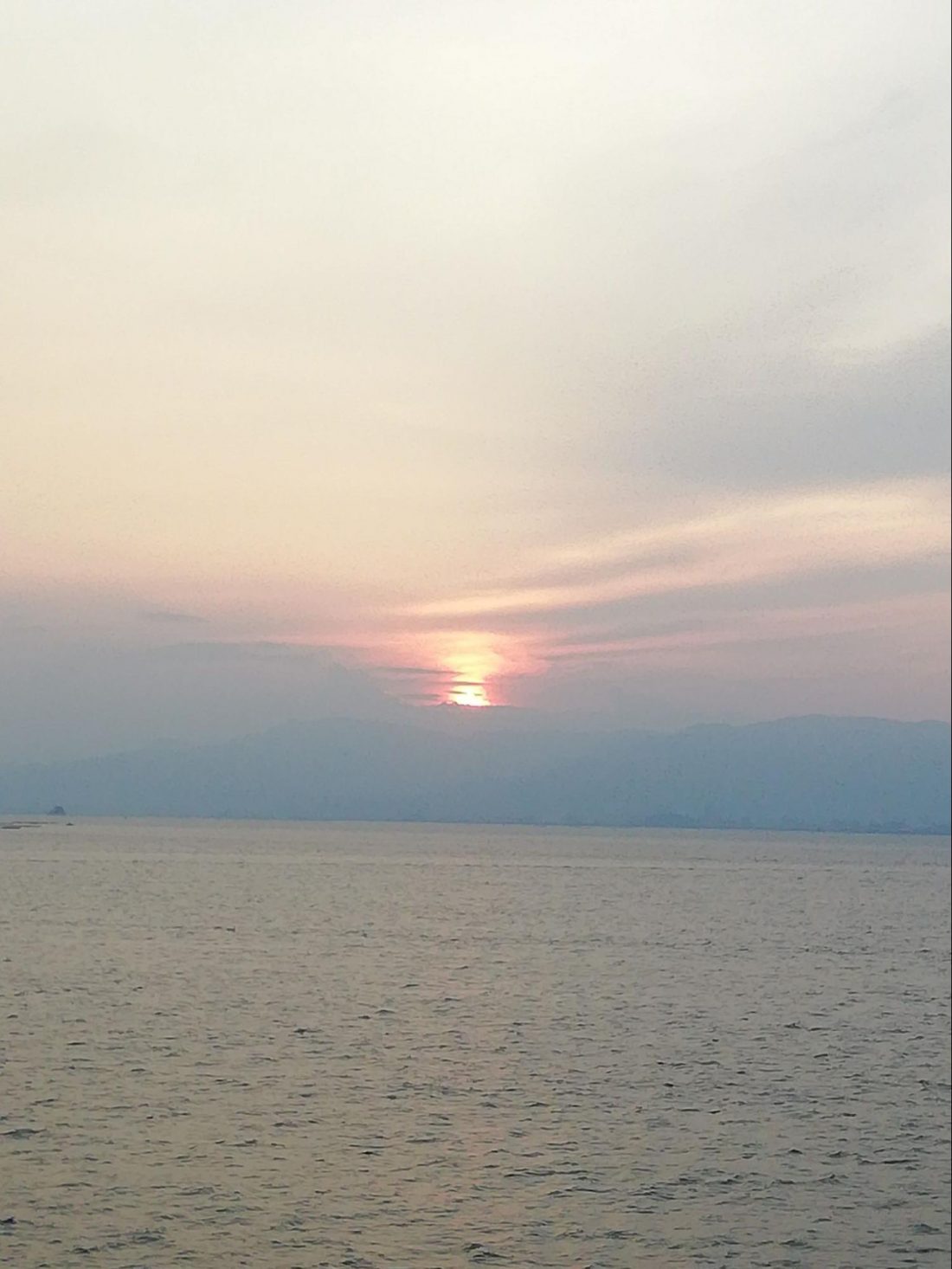
The outward leg is 30 minutes. You’ll begin by pulling out of Ujina port. Be sure to look to your left just out of the harbor for the sight of Prince Hotel right on the edge of a little peninsula, with a bit more of the industrial complex along the waterfront further in than that. But the majority of your view will be to the right, the west, as you watch the sunset but also several islands roll by. In fact, right straight in front, out of the harbor, is a very photogenic teardrop mountain of an island that quickly passes to the right.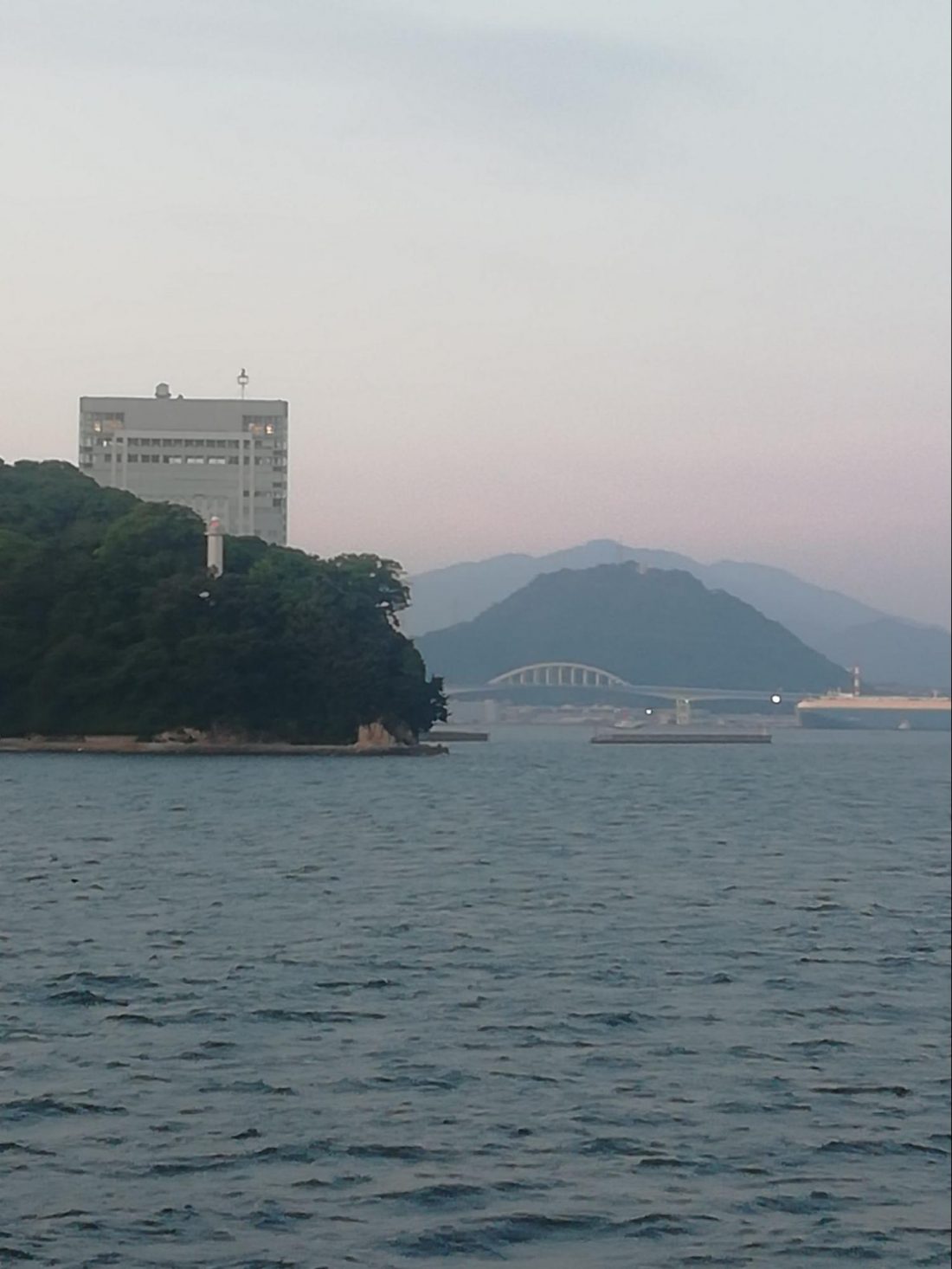
Also be sure to watch for some oyster farms to the right about halfway through the journey off the coast of another island. If you are not sure what an oyster farm looks like, it is essentially a series of wooden planks just floating in the water. If you were not aware, those planks are for oysters. Hiroshima is responsible for 60% of all the oysters consumed in Japan, so be sure to look for the farm. Of course, the oysters being under water, you’ll only see the platforms, but if you time it right that can also be an interesting photo opportunity.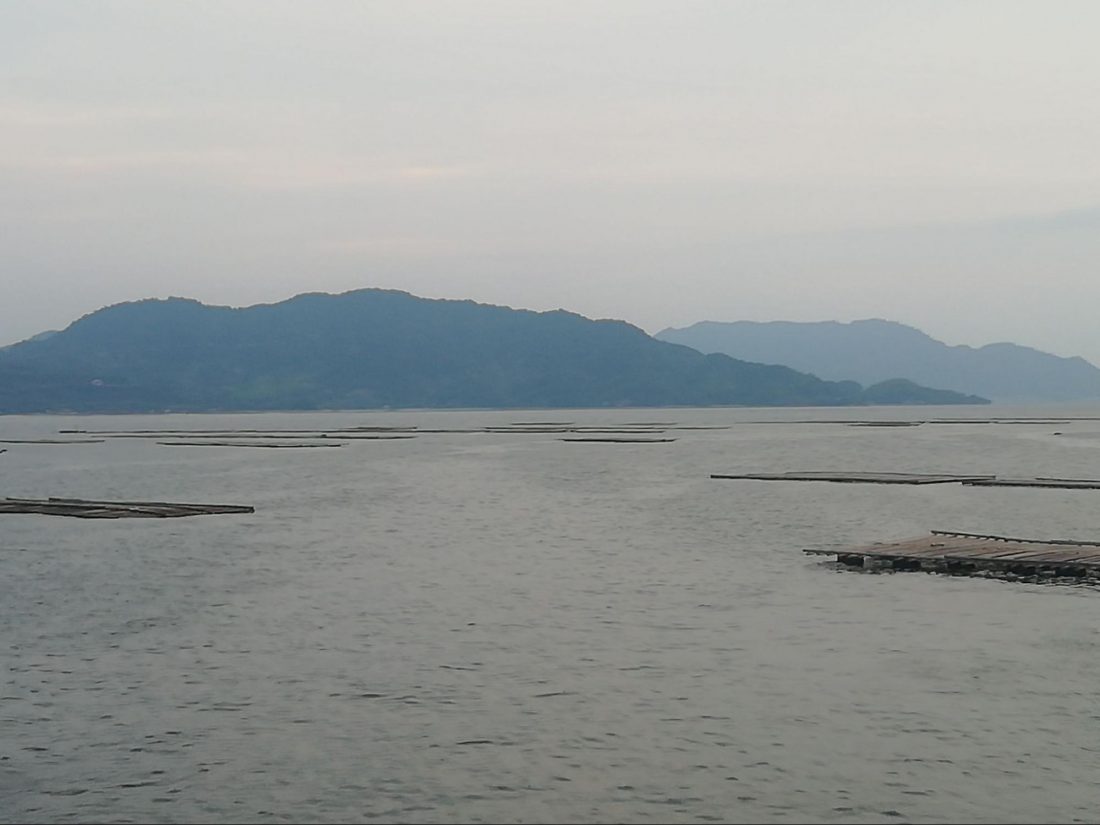
THE RETURN
After almost 30 minutes you’ll pull into port at Etajima. Please remember that you may not disembark. You probably shouldn’t even leave the cabin area just to avoid confusion. The port at Kirikushi is, not surprisingly, considerably smaller than Ujina Port, so there is nothing to see anyway. But the island of Etajima itself does loom quite large in front, and with the sun having gone downit has that glorious gloom of dusk hanging over it.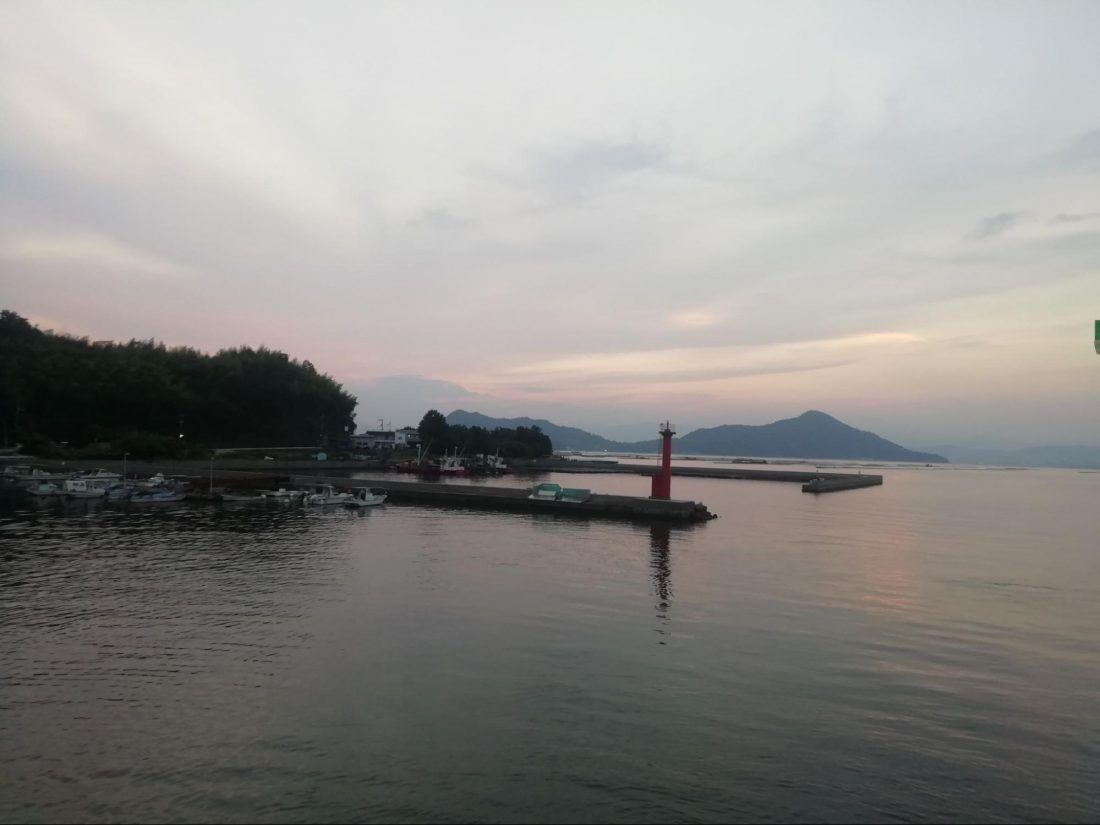
If you snagged one of the central tables on the way out, you’ll be fine to stay right there on the way back. I had claimed a seat near the front on the way out, and realized I’d now be near the back and rear-facing at that, so I used this opportunity to move to the opposite end of the cabin so I could continue my easy access to the door and the best photo opportunities. A cleaning crew came on before new passengers were allowed on board, so I expected to have to explain that I was doing the Osanpo Cruise, but no one questioned me or paid me any mind. In fact, on the return my ticket wasn’t even checked by the crew (though perhaps my unique face was memorable to them already from the outward voyage).
Granted the view is virtually the same on the way back, I still thoroughly enjoyed how different everything looked in the shadows of oncoming night. Depending on your luck with cloud conditions, and such, this will be the part of the journey that will give you a palette of color in the sky. I didn’t get the most spectacular color spectrum that evening. Fairly mild even. Yet I still found myself bouncing up out of my seat time-and-again to capture the sky, first over the sea, then over a dark island, then over a different ferry glowing on the water with its many lights. I was really getting shutter-happy with my camera.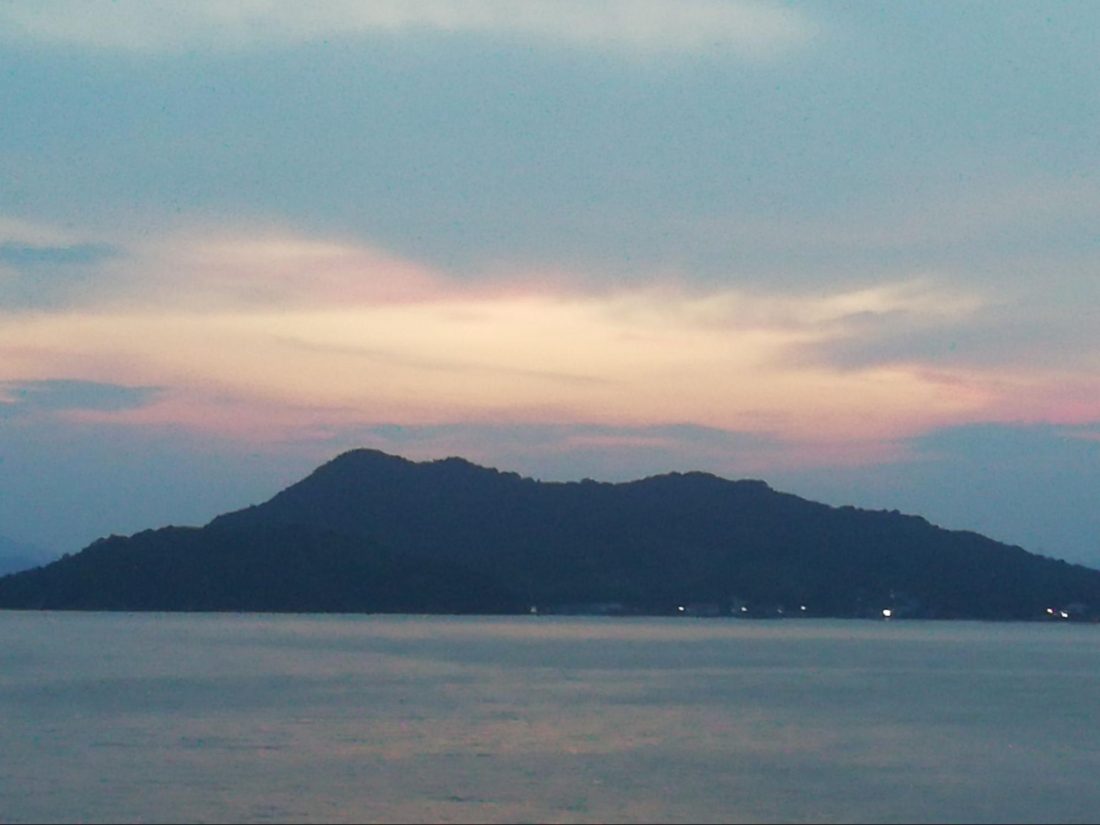
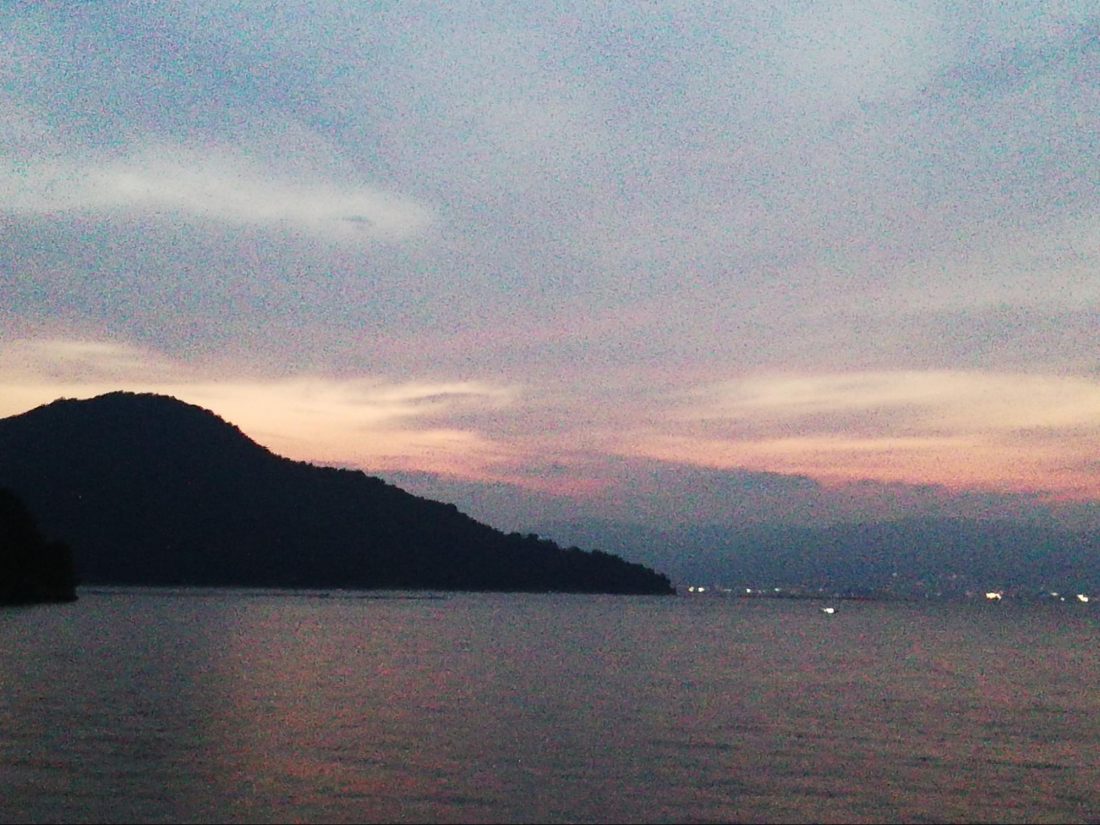

Finally, you’ll near the point of origin, Ujina Port, and be surprised at how different it looks now, all lit up in what is now truly nighttime. The Prince Hotel also shines brightly in its spot on the peninsula, far different in appearance than it was 50 minutes ago. Mostly, though, it is the city of Hiroshima itself (well, a bit of it) that stands out. Whereas when you left, it felt like there wasn’t much of the city to see (the majority of downtown, and Hiroshima’s few tall buildings, are too far from the coast to be readily seen, especially in daylight. But the glow of city lights at night makes these buildings pop to the fore much more, as well as views along the coast in either direction. Hiroshima becomes a bit of a sparkling jewel. I was taking photos right up until harbor entry.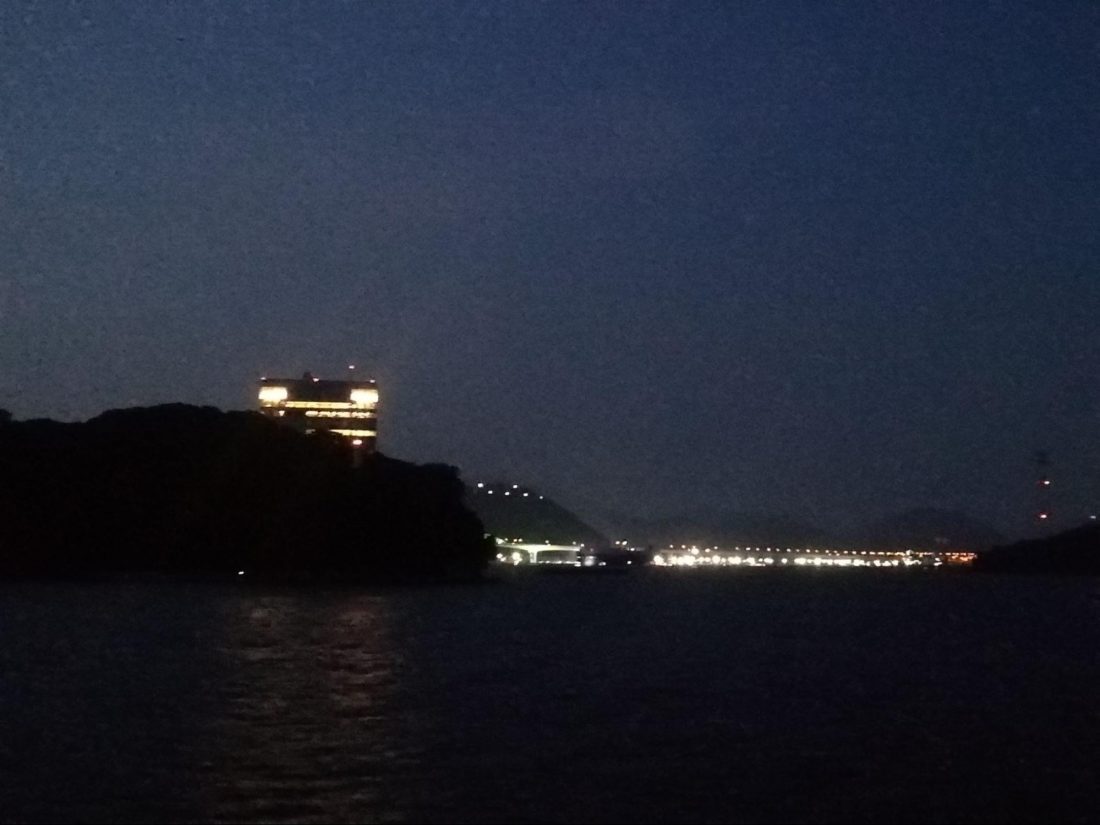

MOMENT OF JOY
The sun was sinking low, but not completely gone. It was casting a narrow beam of light along the water. As I was snapping that view, a returning ferry came along, and I happily waited until it was dead center in the remaining beam, giving me perhaps my favorite moment and favorite photo of the journey. I saw the ship coming and stood there waiting for the opportunity. Timing is everything, and I loved the result.
THE RIVAL OPTIONS
E RIVAL OPTIONS
While at 500 yen it might seem impossible to top this for a sunset cruise, to be fair, I discovered at least two others worth considering. The first goes not to Etajima, but to the island of Ninoshima (a bit smaller). It has the exact same 500 yen cost for the exact same just-don’t-leave-the-boat round-trip arrangement. I imagine the sunset view is nearly identical, but I believe it passes by several smaller uninhabited different islands and could possibly have better photo opportunities. The second option, in fact, boldly claims those better photo opportunities. It also goes to Etajima, actually, but to the port of Mitaka, which is round the other side of the island. As such, it is a 90 minute round-trip, and costs 1,000 yen, but “among ferries operating out of Ujina Port, this one is the farthest west, allowing you to look upon Miyajima to the west and enjoy a beautiful sunset.”
Whatever choice you make though, you can’t go wrong for a beautiful sunset cruise on the open sea that won’t sink your wallet. Bon voyage.




